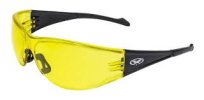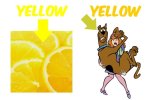There are many different types and shades of yellow.
So what do you mean by a 'true' yellow?
I'm guessing you just mean the intended shade of yellow, and
not semi-transparent and shifting toward an unwanted hue?
Primers and base coats are usually to create a more adhesive surface for the paint,
but another reason to use a 'base' coat is because the paint has some transparency
and requires the base coat to block and trap light, and amplify the colour.
A lot of todays paint colours have transparency and need a reflective metallic base coat to help reflect and bounce light back through the paint,
adding depth to the colour, and highlighting the metallic flecks in the paint (if it has metallic).
Spraying paint basically thins the paint and until you build up enough paint, the colour won't build to its full strength.
So you can end up with semi-transparency and dull colour.
A primer or base coat is used not only as an adhesion base, but also sometimes to stop undercolour from showing through.
The WW2 Messer most likely had a thick, opaque, oil based(enamel) paint applied.
Brushed on, or heavily sprayed.
This type of paint would have required no base coat for colour, like slapping on house paint.
If you airbrush an opaque colour to its full strength, you should be able to achieve the strength of colour you desire.
I don't really see a need for base coat if using the right paint.
You could use a thicker (enamel?) opaque paint, and either brush it on for maximum coverage,
or stencil and spray to a heavier opaque coating.
If you are going to airbrush the colour on, you could try a metallic silver/aluminum base coat rather than white*.
White can have the same problems of semi-transparent application (as the colour you are trying to spray),
and the altered white can then tint or dull the yellow.
*if you are spraying a transparent yellow, you generally use a bright white base to give full opaque effect and the proper hue.
But the white base has to be a full opaque bright white paint, and white tends to be heavy and sometimes very grainy,
resulting in a overall thicker application of paint. An undesirable thing at smaller scales.
(The one-step opaque yellow is less paint on the surface!)
View attachment 100514


